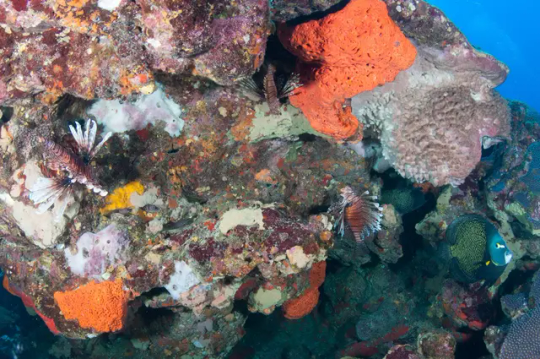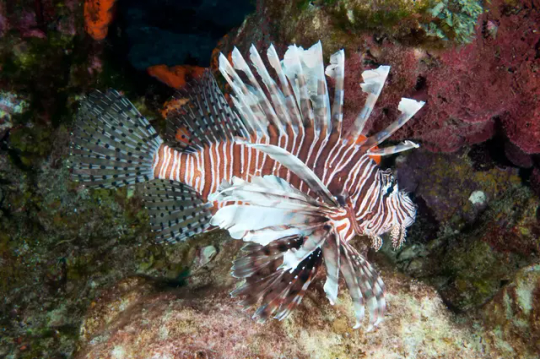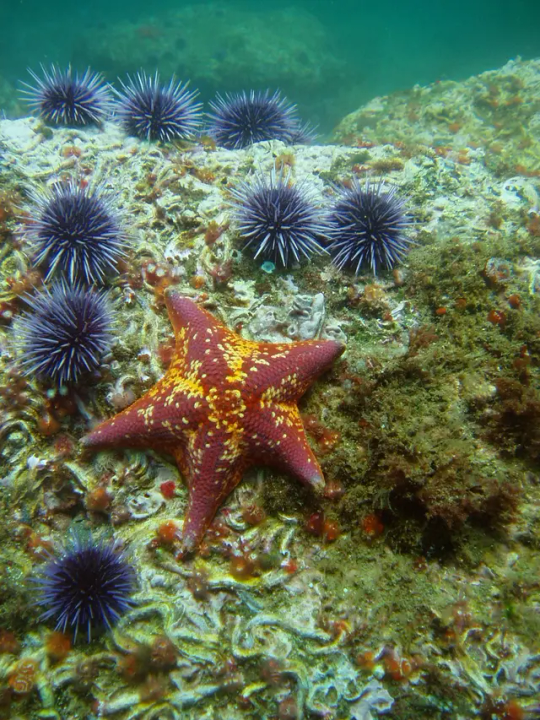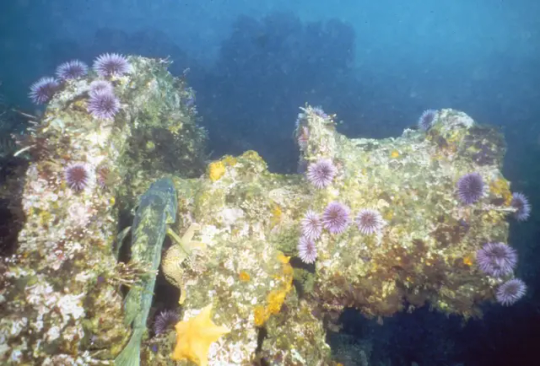🌊 Exploring the Ocean's Hidden Forces and Fragile Ecosystems 🌊Dive deep into the world of marine conservation, ocean currents, and the growing impact of invasive species. From the vibrant underwater forests to the critical role of the AMOC and Gulf Stream in regulating our climate, this blog uncovers the challenges and beauty of our oceans. Follow along for insights, stories, and science-backed articles that highlight the importance of protecting our seas for future generations. 🌍🐟
Don't wanna be here? Send us removal request.
Text
Currents of Change — Part 1: Beyond the Waves: The Ocean in Constant Motion
When people think of the ocean, they often picture waves rolling onto the beach. But beneath the surface, the ocean is a powerful, dynamic force, constantly in motion in ways we rarely see. Two of the most important players shaping our world’s climate are the Atlantic Meridional Overturning Circulation (AMOC) and the Gulf Stream — and they don’t just move water, they impact weather, ecosystems, and economies.
What is the AMOC?
The Atlantic Meridional Overturning Circulation (AMOC) is a massive system of ocean currents that works much like a conveyor belt, moving warm water from the tropics up to the North Atlantic. This warm water travels via the Gulf Stream, which flows along the eastern coast of the United States before crossing the Atlantic. When it reaches colder northern waters, the warm water cools, sinks, and flows back south at deeper levels. This cycle, moving both warm and cold water, helps regulate global temperatures, particularly in Europe and North America.
Without the AMOC, the UK and Ireland wouldn’t just be experiencing cooler winters — they would be facing climates similar to those much further north. The AMOC is a major reason Europe enjoys relatively mild winters for its latitude.
The AMOC’s VIP Treatment: Why Europe Has It Easier Than Canada
The AMOC provides what could be described as climate “VIP treatment” to parts of Europe, especially the UK and Ireland. The Gulf Stream, a critical part of the AMOC, transports warm water from the tropics to the North Atlantic, making winters in places like London far more pleasant than their counterparts at similar latitudes.
Let’s take a lighthearted look at this: London sits at about the same latitude as Calgary, Alberta, yet the experiences of these cities during winter couldn’t be more different. While Londoners debate whether they need a jacket, Calgarians are layering up to survive icy temperatures. Similarly, Dublin, Ireland, with its occasional rainy days, benefits from the Gulf Stream’s warmth, while St. John’s, Newfoundland, experiences a much harsher, frostier reality — despite sitting at nearly the same latitude.
So why is Europe getting all this warm love from the ocean, while Canada’s left out in the cold? The AMOC’s warm tropical waters act like a blanket for Western Europe, protecting it from the freezing conditions its Canadian counterparts endure. Without the AMOC, much of Europe would feel like the Arctic tundra!
How Do These Currents Shape the Environment?
The AMOC and Gulf Stream don’t just impact the climate — they shape marine ecosystems and even influence industries. These currents support rich biodiversity, helping transport nutrients and providing suitable conditions for a variety of marine species. They also moderate weather patterns, supporting agriculture, tourism, and fishing industries.
In Europe, the warmth delivered by the AMOC allows for longer growing seasons and more temperate weather, supporting a range of economic activities that would be much harder to sustain in colder climates. Meanwhile, in North America, the Gulf Stream plays a key role in stabilizing weather and marine life along the eastern seaboard.
Why Are These Currents So Important?
While waves are the most visible sign of ocean movement, the slow, steady flow of the AMOC and Gulf Stream is what really drives climate and environmental stability. These currents regulate global temperatures, support marine ecosystems, and even help determine how we live and work. If they were to slow down or stop, the impacts would be catastrophic — particularly for Europe and the North Atlantic.
But for now, the AMOC keeps moving, quietly ensuring that winter in London isn’t quite like winter in Calgary. And as we continue this series, we’ll explore more about how even small changes in these currents could have profound impacts on our world.



#AMOC#GulfStream#OceanCurrents#MarineScience#ClimateRegulation#OceanHealth#MarineConservation#EnvironmentalScience#ClimateAction#SustainableOceans
0 notes
Text
The Beautiful Invader Wreaking Havoc on Florida’s Reefs: The Lionfish Problem Invasive Species Series — Part 2
This is part of the Invasive Species Series, where we explore how certain non-native species disrupt marine ecosystems and the long-term impacts they have on our oceans.
When you think of an invasive species, a creature with vibrant colors and flowing fins may not immediately come to mind. But in the case of the lionfish (Pterois volitans), its striking appearance hides a destructive impact that has been quietly devastating Florida’s coral reefs.
Lionfish are native to the Indo-Pacific, but their introduction into the Atlantic has caused major problems for marine ecosystems. Accidentally released into the waters off the southeastern United States, likely from home aquariums, lionfish have spread rapidly and are now considered one of the most harmful invasive species in the region.
A Predator Without Limits
What makes the lionfish so dangerous is not just its beauty, but its appetite. Lionfish are voracious predators, feeding on a wide variety of reef fish, many of which are crucial for maintaining the balance of coral ecosystems. Juvenile fish, in particular, are easy targets, which is alarming because these young fish are needed to replenish populations and maintain healthy reefs.
Without natural predators in the Atlantic, lionfish populations have exploded. Unlike in their native Indo-Pacific waters, where they are kept in check by larger predators, the Atlantic has no species capable of controlling their numbers. As a result, lionfish are thriving, and their impact on coral reefs is immense.
Reefs Under Siege
Healthy coral reefs depend on a delicate balance of species — fish that graze on algae, corals that build reef structures, and a variety of creatures that create a thriving ecosystem. Lionfish disrupt this balance by consuming important reef species, particularly herbivorous fish that prevent algae from smothering corals. Without these grazers, algae can overgrow and suffocate coral reefs, leading to their decline.
The rapid spread of lionfish is not just an ecological problem — it has economic consequences too. Florida’s coral reefs contribute millions to the local economy through tourism and fishing. As lionfish reduce biodiversity and reef health, these industries face serious risks.
A Growing Threat
Efforts to control the lionfish population have included organized spearfishing events, commercial harvesting, and public awareness campaigns encouraging people to eat lionfish (which are surprisingly delicious). While these efforts have made a small dent in the population, they are far from solving the problem.
The lionfish invasion is a sobering reminder of the unintended consequences of human actions on delicate ecosystems. Just like the purple urchin, the lionfish has shown that even a single species can have a massive impact on marine environments when ecological balances are disturbed.



#MarineConservation#InvasiveSpecies#Lionfish#OceanHealth#CoralReefs#MarineEcosystems#Biodiversity#ClimateAction#UnderwaterConservation#SustainableOceans
0 notes
Text
Invasive Creatures Series – Part 1: The Tiny Marine Invader Destroying the Pacific’s Underwater Forests
Not every destructive force in the ocean is related to climate change. Meet the purple urchin (Strongylocentrotus purpuratus), a small creature with a massive impact on marine ecosystems along the Pacific coast. While climate change often takes the blame for ocean devastation, this native species is playing a destructive role all its own — turning lush kelp forests into lifeless underwater deserts.
At first glance, the purple urchin seems harmless — a spiny invertebrate quietly grazing on kelp and algae. However, with the disappearance of their natural predators, like the once-abundant sea otter and starfish, purple urchins have been reproducing unchecked. Their population has exploded, and the consequences are devastating. Purple urchins devour kelp forests, which are critical marine ecosystems that provide shelter and food for countless species, including fish, sea otters, and invertebrates. In a healthy ocean, these kelp forests are bustling with life. But where the purple urchin thrives, these underwater jungles are rapidly disappearing, replaced by what scientists call “urchin barrens.”
The reason for this devastation is simple: purple urchins are voracious eaters. They consume kelp at an astonishing rate, and with fewer predators to keep their numbers in check, they swarm the ocean floor, stripping kelp forests of their ability to regenerate. What’s left behind is a barren, lifeless landscape where little else can survive. For marine life that depends on kelp for habitat and food, these barrens represent a significant loss of biodiversity.
Origins of the Purple Urchin
Native to the rocky shores of the northeastern Pacific Ocean, from Alaska to Baja California, purple urchins have been a part of these ecosystems for thousands of years. They typically live in harmony with their surroundings, nestled among rocks and feeding on kelp and algae. In a balanced ecosystem, the purple urchin is just one of many marine herbivores, kept in check by predators like sea otters and starfish.
However, over the past few decades, significant changes have occurred. The populations of the urchins’ natural predators have plummeted, leading to an explosion in the number of purple urchins. The reasons are many, and not all are related to climate change. The fur trade of the 19th and 20th centuries decimated sea otter populations along the West Coast, removing a key predator from the marine food web. More recently, sea star wasting syndrome, a mysterious disease, has wiped out large numbers of starfish, another important predator of purple urchins.
With their natural predators in decline, purple urchins have begun to multiply unchecked, transforming marine ecosystems. Their population boom has resulted in the overgrazing of kelp forests, turning once vibrant, underwater jungles into barren wastelands known as “urchin barrens.”
While the purple urchin is native to these waters, their unchecked population growth is having devastating impacts on the very environments they once thrived in. Their origins are a reminder that even native species can become invasive when ecological balance is disrupted. As they feast on kelp at alarming rates, they not only strip away a vital food source for marine life but also erase the shelter and biodiversity that kelp forests provide.
This destruction isn’t solely a result of climate change, though warming ocean temperatures and other environmental pressures certainly play a role. It’s also a stark example of how human actions — like hunting sea otters and disrupting predator populations — can ripple through ecosystems, leading to unintended consequences.



#MarineConservation#InvasiveSpecies#OceanHealth#PurpleUrchin#KelpForests#OceanRestoration#ClimateChange#UnderwaterEcosystems#MarineBiology#SustainableOceans
2 notes
·
View notes